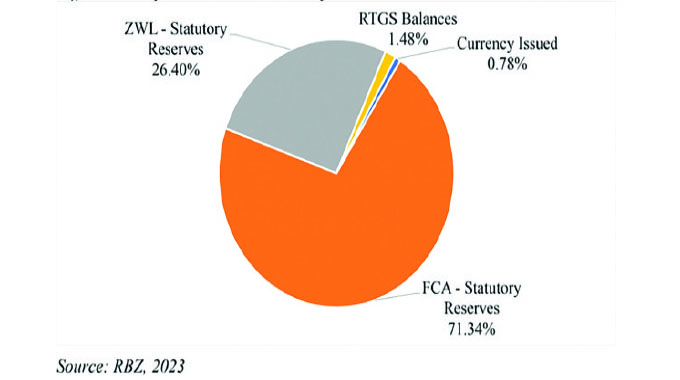What could solutions to Zim’s garbage problem look like?

Climate Story Jeffrey Gogo
What could solutions to Zimbabwe’s garbage problem look like? They can look like nothing at all, as the case mostly is now – heaps of eye-soring uncollected rubbish in the townships and elsewhere, or the flood of raw sewage intoxicating rivers, streams and dams, key drinking water sources.
They can look like the commonly preferred systematic approach to solid waste management, an inverted pyramid type of management that prioritises waste reduction; re-use and composting; recycling; and disposal, in that order.
Or they can look like strategies and efforts that apply cutting edge technologies – and even the most basic technologies for progress’ sake – to turn municipal rubbish into something useful – something like bio-diesel and electricity.
This is what Egyptian project developer MAFGAIB, as reported on these pages a week ago, will try to achieve with the 2 356 tonnes of garbage churned out by people in towns and cities across Zimbabwe each day, much of it uncollected. A public eyesore, a health and ecological time bomb.
The firm plans to turn upto 800 tonnes of municipal rubbish, including human faeces and food waste, to 150 000 litres of bio-diesel, and to between 30 to 40 megawatts of electricity everyday, when it eventually builds a $140 million waste to energy plant to do so here.
By converting waste to energy, MAFGAIB, short for Misr Africa For Growth and Innovation Business, will not only help deal effectively with a problem that has dogged Zimbabwe’s proven environmental laggards like Harare City for decades, but also to meet national climate goals under the Paris Accord.
MAFGAIB aims to cut emissions of methane, a potent greenhouse gas, by about 219,000 tonnes of carbon dioxide equivalent, according to company president Tarek Ibrahim, which could prove invaluable to ambitions by Zimbabwe under the Paris deal to cut emissions by more than a third by 2030, everything else remaining constant.
Little sewage pond
The national waste management problem is best exemplified by Harare, and befittingly so in light of its now inglorious status as Zimbabwe’s capital city – a dirty, little pond of sewage.
Much of the problems though have to do with urbanisation, a lack of foresight and to some extent the general economic challenges.
The Harare City Council has failed to cope with a rise in the number of people moving from rural areas into the city in search of a better life.
In the past 30 years, population in the capital has doubled to more than 2,1 million people, meaning everything else should also double – from food to transport, housing to water delivery and sewer systems. And also garbage collection.
It has not.
The municipality has done little to prepare the city to absorb the growing urban population, to the extent that earlier plans by Harare city to set-up a $100 million biogas plant, as an effective waste management measure, have suffered a still birth.
Authorities have taken notice.
“Increase in population has not been matched by a corresponding enhancement in the necessary infrastructure and services and has been a major challenge to Zimbabwean urban local authorities,” said Environment Minister Oppah Muchinguri Kashiri.
“Consequently, there has been an increase in urban solid waste generation not matched with sound waste management systems posing environmental and health hazards particularly to the urban population of Zimbabwe,” she said, in the Solid Waste Management Plan of 2014.
“This is now creating an environment where disease causing vectors can thrive; contributing to air, soil and water pollution; and emitting greenhouse gases that cause global warming with negative impacts on the value of properties,” Mrs Muchinguri Kashiri added.
It is possible Harare may have anticipated these changes in some of its planning, but failures to enforce concrete remedial action is what has given rise to some of the worst institutionalised environmental crimes in the country.
In 2014, a multi-ministerial Cabinet Committee on water pollution found the Harare City Council guilty of daily discharging 3 885 mega litres, or 19,43 million drums, of raw sewage into water systems around the capital city.
It costs several millions of dollars to treat the council’s recklessness, which could be avoided, but is now a major health threat, often times fuelling water-borne diseases like typhoid, a nuisance that has cost dozens of lives in the city, and hundreds more countrywide.
The smart city way
This is the problem that faces the capital city, a complex and vicious cycle, a garbage and health problem, an ecocological nightmare shared by other cities and towns across Zimbabwe, a country where rural to urban migration has soared to 38,1 percent in 2010, from 10,6 percent 60 years ago.
It is not a problem of the future, but of the now, and moreso in the context of climate change, where the fast growing of Africa south of the Sahara have increasingly become vulnerable to the impacts of changing climates..
In Zimbabwe, the risk is still low but the threat of economic and social disruptions arising from climate disasters is already being felt.
For example, it is the same Harare City Council that has allowed property development to take place on wetlands, forcing the water table to drop to as deep as 30 metres from 18 metres.
Under its pliant watch, many people have gone on to build and live in makeshift houses in unplanned areas that often lack adequate water, sanitation and waste collection.
Such areas face hazards – such as flash flooding – that may become more frequent or intense as a result of climate change. At least 10 people were believed to have died at Hopley four years ago following torrential rains that destroyed homes.
As far as climate change impacts are concerned, it is important for Zimbabwean cities to increase resilience by facilitating and mainstreaming adaptation and disaster risk reduction measures in planning and development.
The concept of building clean, climate smart and resilient cities is a new approach to sustainable development.
Cities contribute significantly to the production of greenhouse gases, the biggest cause of climate change.
Conversely, they have now started to feel the dangerous impacts of their own actions, which are premised on explosive manufacturing, transport, consumption and construction activities, big sources of carbon.
Tarek Ibrahim, the MAFGAIB founder and president, believes his company has the sort of technology – plasma gasification – to help Zimbabwe’s garbage problem look something like electricity and bio-diesel, have it altogether disappear.
“Our project will help to solve problems associated with open space dumps, waste disposal in water bodies, mass burning while availing a suitable way to collect and transport municipal waste from source to the treatment,” Ibrahim told The Herald Business, by email.
Ibrahim’s waste energy is self-powered. It makes use of a technology called plasma gasification, using alternating current and not direct current, to “improve efficiency, productivity and lifespan, while reducing the instability, loss of power, operation and maintenance costs,” he said.
Other plants simply burn waste material to produce power.
God is faithful.








Comments